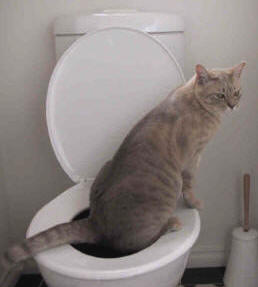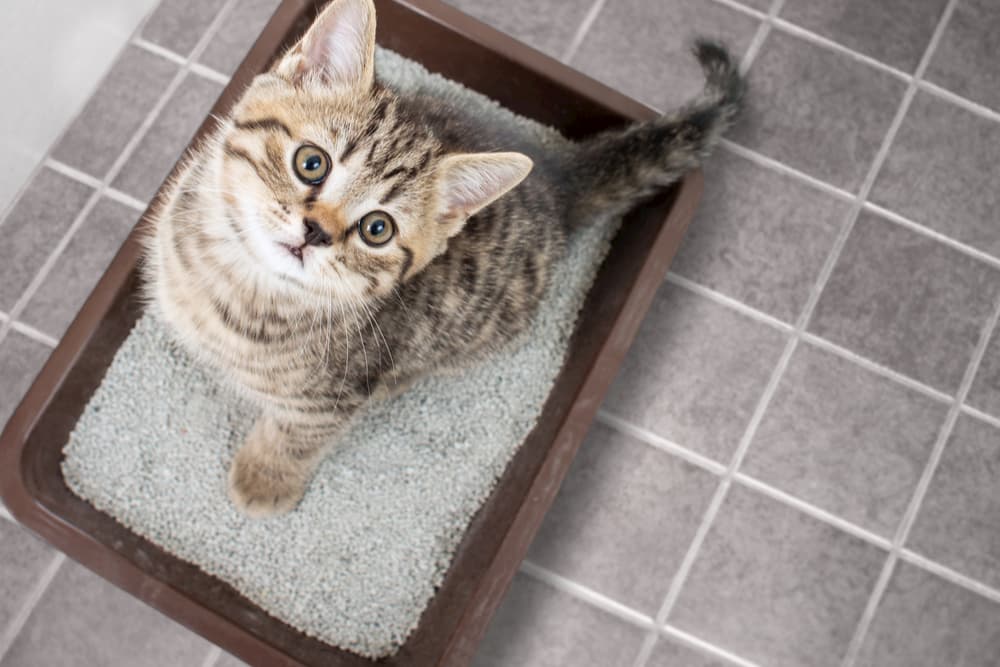When You Must Never Dispose of Animal Waste Down the Toilet
When You Must Never Dispose of Animal Waste Down the Toilet
Blog Article
Every person is bound to have their own way of thinking on the subject of 10 Things You Should Never Flush Down The Toilet.

When it pertains to disposing of waste, especially animal waste, lots of people usually turn to the convenient choice of flushing it down the toilet. However, this seemingly very easy service can have severe effects for the setting and public health. In this short article, we'll check out why flushing pet waste down the bathroom is a bad idea and give alternate approaches for proper disposal.
Introduction
Proper garbage disposal is crucial for maintaining ecological sustainability and public health. While it may appear safe to purge animal waste down the toilet, it can cause different issues, both for the setting and human health.
Dangers of flushing pet waste
Environmental influence
Purging pet waste introduces harmful germs and virus into waterways, which can negatively affect water ecosystems. These microorganisms can infect water resources and harm marine life, interfering with delicate ecosystems.
Public health issues
Pet waste has dangerous germs such as E. coli and Salmonella, which can pose major health and wellness risks to humans. Purging animal waste down the bathroom can pollute water products, leading to the spread of illness and infections.
Alternatives to flushing
Instead of purging pet waste down the bathroom, there are a number of alternative disposal methods that are much more eco-friendly and hygienic.
Composting
Composting pet waste is an environmentally friendly means to deal with it. By composting, raw material is broken down right into nutrient-rich soil, which can be made use of to fertilize gardens and plants.
Garbage dump disposal
Disposing of pet waste in a land fill is another alternative. While not as environmentally friendly as composting, it is a more secure alternative to flushing, as it protects against the contamination of water sources.
Pet dog waste disposal systems
There are customized family pet waste disposal systems readily available that safely and hygienically deal with animal waste. These systems often make use of enzymes to break down waste and eliminate odors.
Actions to appropriate animal garbage disposal
To make sure correct disposal of pet waste, adhere to these actions:
Scooping and getting waste
Regularly scoop and bag animal waste making use of naturally degradable bags. This protects against waste from polluting the atmosphere.
Making use of assigned waste bins
Dispose of bagged animal waste in assigned waste containers, such as compost containers or garbage dump bins. Avoid flushing it down the bathroom whatsoever expenses.
Cleansing can and family pet locations routinely
Routinely tidy can and family pet areas to stop the build-up of waste and bacteria. Usage pet-safe check here cleansing products to preserve health.
Advantages of correct disposal approaches
Taking on proper disposal approaches for pet waste offers several advantages:
Reduced environmental pollution
Correct disposal methods reduce the danger of environmental pollution, securing waterways and communities from contamination
Reduced threat of water contamination.
By preventing flushing animal waste down the toilet, the threat of water contamination is substantially lowered, securing public health.
Improved hygiene and health
Appropriate disposal methods promote far better hygiene and hygiene, producing a more secure setting for both humans and animals.
Verdict
Finally, purging pet waste down the commode is dangerous to the setting and public health. By taking on alternate disposal approaches and complying with proper waste administration practices, we can reduce the adverse impact of pet waste and add to a cleaner, much healthier planet.
Why You Should Never Flush Cat Poop Down the Toilet
A rose by any other name might smell as sweet, but not all poop is created equal. Toilets, and our sewage systems, are designed for human excrement, not animal waste. It might seem like it couldn’t hurt to toss cat feces into the loo, but it’s not a good idea to flush cat poop in the toilet.
First and foremost, assuming your cat uses a litter box, any waste is going to have litter on it. And even the smallest amount of litter can wreak havoc on plumbing.
Over time, small amounts build up, filling up your septic system. Most litter sold today is clumping; it is made from a type of clay that hardens when it gets wet. Ever tried to scrape old clumps from the bottom of a litter box? You know just how cement-hard it can get!
Now imagine just a small clump of that stuck in your pipes. A simple de-clogger like Drano isn’t going to cut it. And that means it’s going to cost you big time to fix it.
For an amusing, graphic tale of what happens when you flush too much litter down the toilet all at once, take a few minutes to read Gene Weingarten’s 2017 Washington Post column “So that’s what happens when you flush cat litter down the toilet.”
Parasitic Contamination
Believe it or not, your healthy kitty may be harboring a nasty parasite. Only cats excrete Toxoplasma in their feces. Yet it rarely causes serious health issues in the cats that are infected. Most people will be fine too if infected. Only pregnant women and people with compromised immune systems are at risk. (If you’ve ever heard how women who are expecting are excused from litter cleaning duty, Toxoplasma is why.)
But other animals may have a problem if infected with the parasite. And human water treatment systems aren’t designed to handle it. As a result, the systems don’t remove the parasite before discharging wastewater into local waterways. Fish, shellfish, and other marine life — otters in particular — are susceptible to toxoplasma. If exposed, most will end up with brain damage and many will die.
Depending on the species of fish, they may end up on someone’s fish hook and, ultimately on someone’s dinner plate. If that someone has a chronic illness, they’re at risk.
Skip the Toilet Training
We know there are folks out there who like to toilet train their cats. And we give them props, it takes a lot of work. But thanks to the toxoplasma, it’s not a good idea.
Leave the toilet to the humans, and accept your future litter cleaning duty.

Routinely tidy can and family pet areas to stop the build-up of waste and bacteria. Usage pet-safe check here cleansing products to preserve health.
Advantages of correct disposal approaches
Taking on proper disposal approaches for pet waste offers several advantages:
Reduced environmental pollution
Correct disposal methods reduce the danger of environmental pollution, securing waterways and communities from contamination
Reduced threat of water contamination.
By preventing flushing animal waste down the toilet, the threat of water contamination is substantially lowered, securing public health.
Improved hygiene and health
Appropriate disposal methods promote far better hygiene and hygiene, producing a more secure setting for both humans and animals.
Verdict
Finally, purging pet waste down the commode is dangerous to the setting and public health. By taking on alternate disposal approaches and complying with proper waste administration practices, we can reduce the adverse impact of pet waste and add to a cleaner, much healthier planet.
Why You Should Never Flush Cat Poop Down the Toilet
A rose by any other name might smell as sweet, but not all poop is created equal. Toilets, and our sewage systems, are designed for human excrement, not animal waste. It might seem like it couldn’t hurt to toss cat feces into the loo, but it’s not a good idea to flush cat poop in the toilet.
First and foremost, assuming your cat uses a litter box, any waste is going to have litter on it. And even the smallest amount of litter can wreak havoc on plumbing.
Over time, small amounts build up, filling up your septic system. Most litter sold today is clumping; it is made from a type of clay that hardens when it gets wet. Ever tried to scrape old clumps from the bottom of a litter box? You know just how cement-hard it can get!
Now imagine just a small clump of that stuck in your pipes. A simple de-clogger like Drano isn’t going to cut it. And that means it’s going to cost you big time to fix it.
For an amusing, graphic tale of what happens when you flush too much litter down the toilet all at once, take a few minutes to read Gene Weingarten’s 2017 Washington Post column “So that’s what happens when you flush cat litter down the toilet.”
Parasitic Contamination
Believe it or not, your healthy kitty may be harboring a nasty parasite. Only cats excrete Toxoplasma in their feces. Yet it rarely causes serious health issues in the cats that are infected. Most people will be fine too if infected. Only pregnant women and people with compromised immune systems are at risk. (If you’ve ever heard how women who are expecting are excused from litter cleaning duty, Toxoplasma is why.)
But other animals may have a problem if infected with the parasite. And human water treatment systems aren’t designed to handle it. As a result, the systems don’t remove the parasite before discharging wastewater into local waterways. Fish, shellfish, and other marine life — otters in particular — are susceptible to toxoplasma. If exposed, most will end up with brain damage and many will die.
Depending on the species of fish, they may end up on someone’s fish hook and, ultimately on someone’s dinner plate. If that someone has a chronic illness, they’re at risk.
Skip the Toilet Training
We know there are folks out there who like to toilet train their cats. And we give them props, it takes a lot of work. But thanks to the toxoplasma, it’s not a good idea.
Leave the toilet to the humans, and accept your future litter cleaning duty.

I hope you enjoyed our piece about 4 Reasons Why Dog Poop Cleanup is Important. Many thanks for taking the time to read through our piece of content. Please take the time to distribute this post if you appreciated it. We recognize the value of your readership.
Request Estimate Report this page